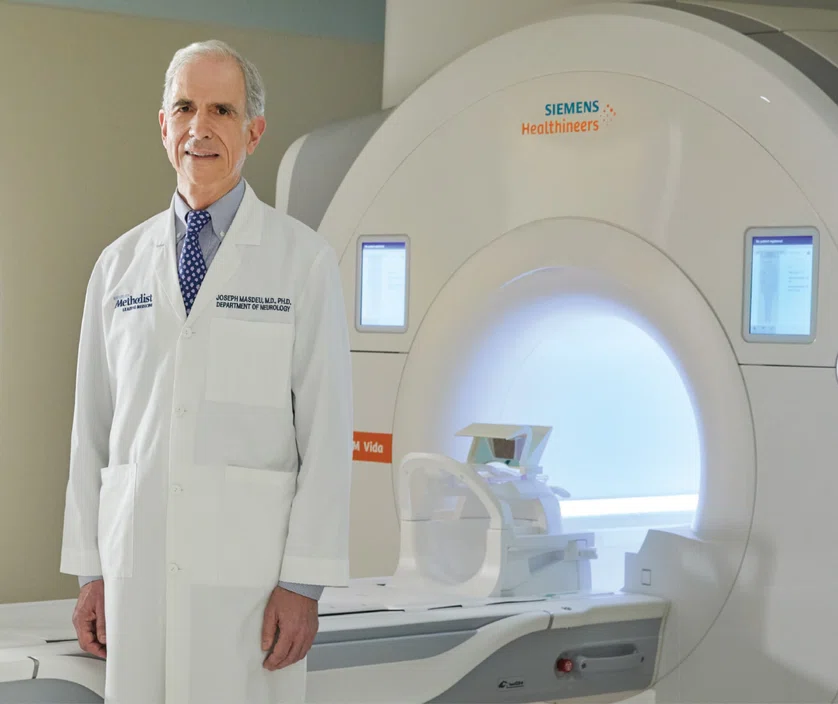
President’s letter
2020 Metrics
Cycle of Translation
Visionary Gifts

Discovery to Clinic

Innovative Education

Translational Luminaries
Introduction
The Ann Kimbell and John W. Johnson Center for Cellular Therapeutics
The Fondren Food & Health Alliance and The Fondren Inflammation Center
Cockrell Center for Advanced Therapeutics
Paula and Joseph C. “Rusty” Walter III Translational Research Initiative
Jerold B. Katz Academy of Translational Research
result
Outcomes Research
Precision Medicine
CPRIT Funding to Drive New Discoveries in Cancer Therapeutics
Siemens Healthineers and Houston Methodist Imaging Innovation Hub Empowers Researchers to Push the Boundaries
Novel Monoclonal Antibody Treatment Halts Tumor Growth in Deadly Ovarian and Pancreatic Cancers
Houston Methodist Institute for Technology, Innovation & Education (MITIESM)
Can Devices Provide A New Treatment Option for Glioblastoma?
Houston Methodist Hospital’s new Paula and Joseph C. “Rusty” Walter III Tower offers the Most advanced treatments and innovations available
Neuroimaging Offers New Insights into Neurodegeneration
COVID-19 Studies
Restorative Medicine
Houston Methodist and Rice University Launch Center for Translational Neural Prosthetics and Interfaces
Non-invasive Spinal Stimulation Enables Paralyzed People to Stand Unassisted
Dissolvable Implants Enhance the Body’s Ability to Heal Broken Bones
Cell Encapsulation May Hold the Key to Preventing Cell Transplant Rejection
Revolutionizing the Future of Complex Valve Disease Management



Science in Service
of
Medicineresult
President's letter
2020 Metrics
Cycle of Translation
Visionary Gifts of Hope


Introduction

The Ann Kimbell and John W. Johnson Center for Cellular Therapeutics

The Fondren Food & Health Alliance and The Fondren Inflammation Center

Cockrell Center for Advanced Therapeutics

Paula and Joseph C. “Rusty” Walter III Translational Research Initiative

Jerold B. Katz Academy of Translational Research

From Discovery to Clinic


Introduction

Restorative Medicine


Houston Methodist and Rice University Launch Center for Translational Neural Prosthetics and Interfaces

Non-invasive Spinal Stimulation Enables Paralyzed People to Stand Unassisted

Dissolvable Implants Enhance the Body’s Ability to Heal Broken Bones

Cell Encapsulation May Hold the Key to Preventing Cell Transplant Rejection

Revolutionizing the Future of Complex Valve Disease Management

Precision Medicine


CPRIT Funding to Drive New Discoveries in Cancer Therapeutics


An Innovative New Tool to Enable Drug Discovery and Personalized Medicine


Devising a Novel Combination Treatment for Aggressive Double-hit Lymphoma



Expanding the RNAcore to Encompass the Entire Cycle of a Cure


Siemens Healthineers and Houston Methodist Imaging Innovation Hub Empowers Researchers to Push the Boundaries

Novel Monoclonal Antibody Treatment Halts Tumor Growth in Deadly Ovarian and Pancreatic Cancers

Houston Methodist Institute for Technology, Innovation & Education (MITIESM)


Surgical Technology Developed in MITIE Gains FDA Approval


Pushing the Frontier of the Robotics Revolution

Can Devices Provide A New Treatment Option for Glioblastoma?

Houston Methodist Hospital’s new Paula and Joseph C. “Rusty” Walter III Tower offers the Most advanced treatments and innovations available

Neuroimaging Offers New Insights into Neurodegeneration

Translational Luminaries

Neuroimaging Offers New Insights into Neurodegeneration

At a time when most efforts to combat Alzheimer’s disease were focused on amyloid protein, Joseph C. Masdeu, MD, PhD, Graham Family Distinguished Chair for Neurological Sciences and director of the Nantz National Alzheimer Center at the Houston Methodist Neurological Institute found evidence that Alzheimer’s development was associated with an abnormal folded tau protein derived from the normal tau proteins that neurons use to form the white matter highways that facilitate communication among the brains various networks.
These findings, published in Neurology, suggest that tau is the critical factor, rather than amyloid, to the development of neurodegenerative disorders.
Masdeu was the first to demonstrate in vivo that abnormal tau proteins spread throughout human brain networks using white matter tracts. The Journal of Nuclear Medicine study combined MRI and 18F-flortaucipir PET to study tau protein behavior in a tau-dependent progressive neurodegenerative disorder that affects the language-related syntactic neural network. In the study participants, tau accumulation likely began in the anterior frontal node and travelled to the spatially separate posterior temporal lobe. The acruate fasciculus white matter tract connecting these regions was most affected near the anterior frontal node, corresponding to a loss of neurons in the anterior node.
This discovery reveals a window of opportunity for treatment, because to jump from neuron to neuron, tau appears to become extracellular - and possibly amenable to immunotherapy using antibodies that target this abnormal protein to hamper the spread, thereby preserving neural networks. Three clinical trials are underway at the Nantz National Alzheimer Center using anti-tau antibodies from Abbvie, Biogen and Eli Lilly.
With the use of MRI combined with 18F-FDG, 18F-flortaucipir and 18F -AV-1451 PET , Masdeu’s group was the first to report that brain areas with abnormal tau protein deposits had decreased metabolism, a sign of low regional activity. The tau accumulations form the neurofibrillary tangles seen in Alzheimer’s disease and other neurodegenerative disorders. By contrast, areas with a high amyloid load may have a normal metabolism.
More from Discovery to Clinic










